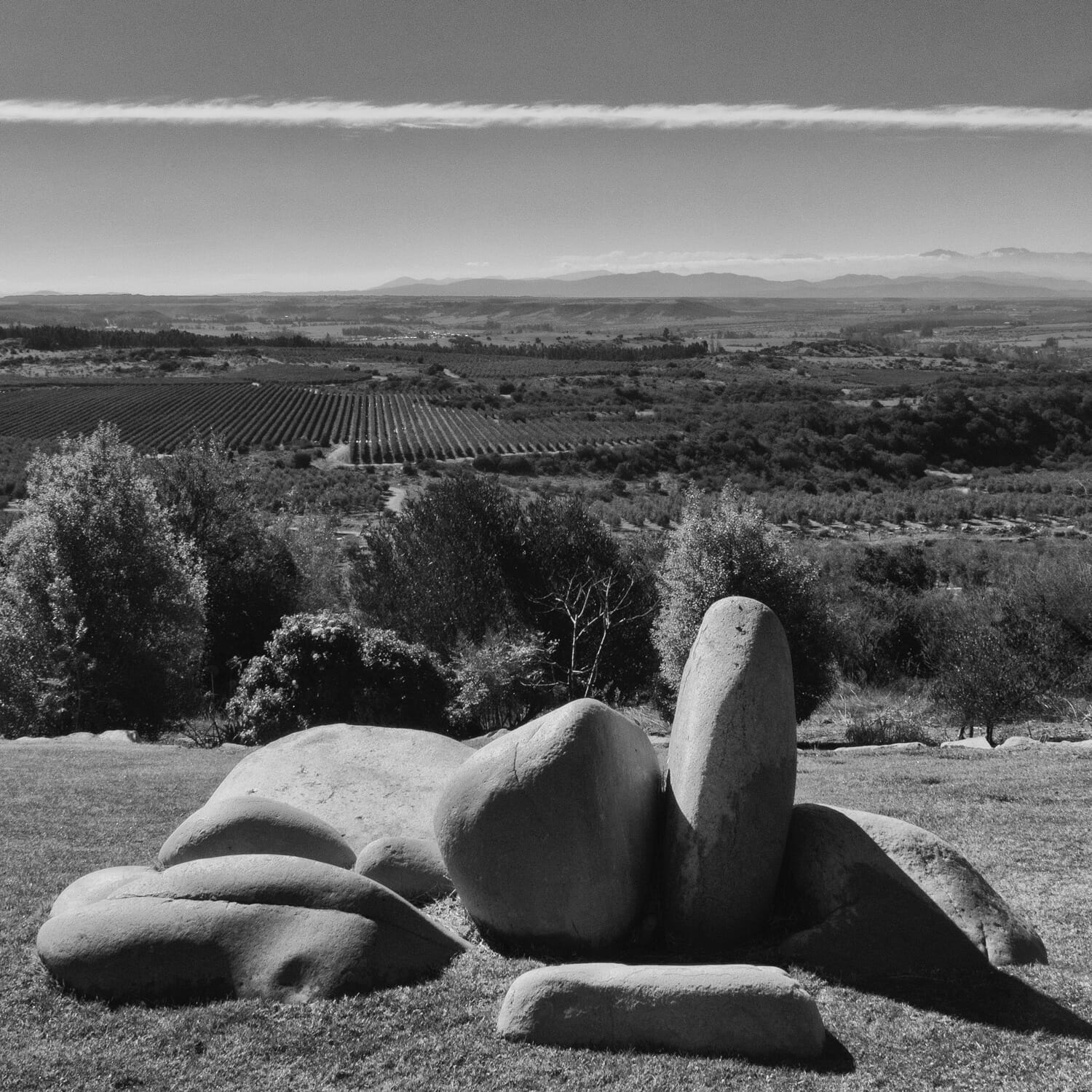Photo by Nicholas Coleman
Coleman Collection #27
PRODUCER
Alonso
CULTIVAR
Coratina
Harvest Date
May 2022
REGION
Litueche, Chile
Alonso chose the town of Litueche located 26 km from the Pacific Ocean in the VI region of Chile because of its optimal conditions for olive tree cultivation.
The area’s dry hot summer days with cool nights climate resembles the Mediterranean. Because water is scarce and the Andes mountains snowmelt is unreliable, the Alonso family built a lagoon and a series of wells to collect rain water used to irrigate its groves. They grow nine cultivars on four hundred hectares – Coratina, Frantoio, Leccino, Picual, Arbequina, Arbosana, Koroneiki, Manzanilla and Nocellara – each of which produces its own unique aroma, flavor and texture.
After sampling from their master tanks, we’ve selected an early hand-harvested monocultivar Coratina. The olive harvest from tree to mill takes no more than 15 minutes, after which the oil is cold extracted below 26 degrees Celsius using the most sophisticated Alfa Laval machinery.
This critical step locks in the oil’s vibrant scent and distinctive characteristics. Before storage in climate-controlled stainless-steel tanks the oil is filtered for purity to remove undesirable micro and macroscopic olive sediment.
The Italian-originated Coratina, known for its high antioxidant levels, provides an assertive flavor with undertones of freshly cut grass and herbs, which produces a vibrant yet balanced bitterness that reverberates with an elongated peppery finish. This peppery sensation—considered an attractive attribute of high-quality extra virgin olive oil—is produced by oleocanthal, a natural phenolic compound with both anti-inflammatory and antioxidant properties. This oil is best utilized raw, poured with reckless abandon to anoint and brighten your favorite cuisines.
Chile’s most prestigious wine producing regions are all nestled between the looming Andes mountains to the east and the vast blue of Pacific Ocean to the west. Thus, during the cooler growing months the grapes receive the benefit of vine tempering warming ocean winds, while during the hot summer months cold mountain winds rolling down the Andes mountainsides provide the vines relief from the heat.
This environment produces balanced and healthy grapes resulting in consistent and terroir-driven wines. Carmenere, Chile’s primary red grape variety, is characterized by dark plum fruit flavors and soft velvety tannins. It’s best paired with some of Chile’s most typical dishes, among them Longanizas de Chillan (pork, oregano, garlic, paprika sausages from Chillan) and Milcao (potato bread with lard and pork crackling).



